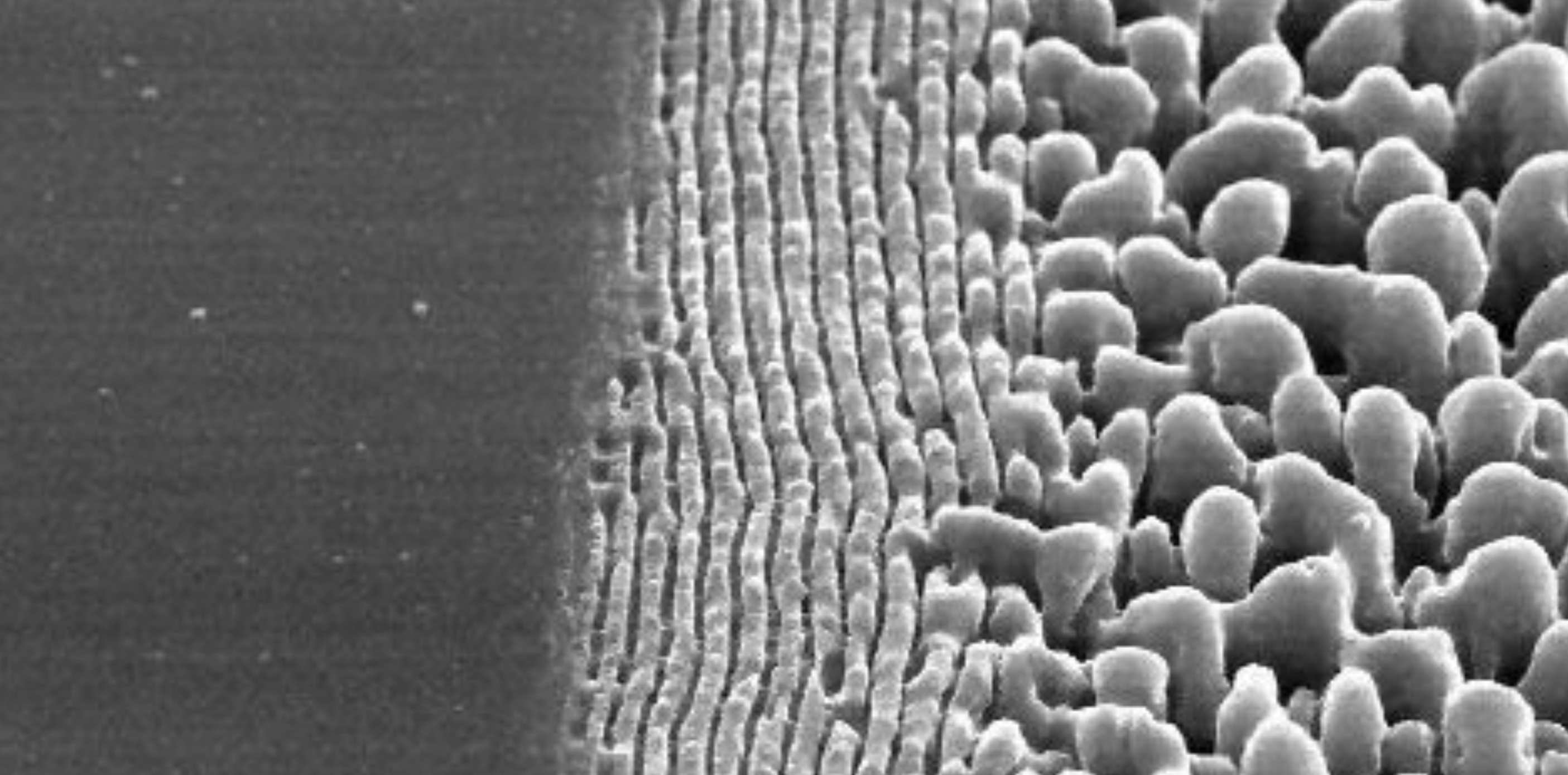

| Funding period: | Nov. 1, 2021 to Oct. 31, 2024 |
| Agency: | DFG |
| Further details: | https://gepris.dfg.de/gepris/projekt/454915637 |
We acknowledge funding by the DFG project "Multiple contact friction on laser-induced periodic surface structures" (LIPSS, grant agreement ID: GN 92/18-1, AOBJ: 674380)
This project aims to address a fundamental problem in materials science, i.e. the relation between the material and geometric properties of two solid surfaces and the kinetic friction variations recorded when the surfaces slide past each other in dry conditions. To this end we will make use of state-of-the-art preparation and characterization methods including femtosecond laser irradiation and advanced atomic force microscopy (AFM) techniques. Laser induced periodic surface structures (LIPSS) with different special periods, orientation and degrees of complexity will be the benchmark for friction force measurements with colloidal probes used as sliding objects. The materials addressed in the project will include metals (stainless steel), glasses (fused silica), polymers (PDMS, PVS, PMMA), and graphite (HOPG) which will allow to establish and analyse a significant collection of friction force signals. Due to the complexity of the problem (involving millions of atoms in the contact areas continuously ruptured and formed again) we will ignore phenomena occurring at the molecular scale, but rather treat the two bodies as a continuum and start from a statistical characterization (a) of the surface properties (morphology, stiffness and adhesion) before the contact is established and (b) of the time evolution of the friction under different loading conditions. The first series of data will be used as an input for numeric simulations based on the contact theory recently established by B.N.J. Persson. This theory is capable of predicting the real contact area corresponding to a given normal force from the power spectral density of the surface height. The second series of data will be compared with the friction force variations estimated with the Burridge-Knopoff model for earthquake dynamics. This pioneer model considers a series of blocks joined by springs and collectively dragged (elastically) by a larger object simulating a tectonic plate. In our case, the blocks correspond to the contact patches and the springs represent the stiffnesses of the “bridges” established through the bulk material joining two patches. The driving plate is the colloidal probe coupled to the AFM cantilever. As a result a complex pattern of overlapping stick-slip phases is expected, the average of which, divided by the applied normal load, is the friction coefficient. This will be interesting to test possible deviations from the Amonton’s theory, which has been recently discussed in the literature, and also find important multidisciplinary applications, e. g. in the development of artificial tactile sensors.


| Funding period: | Nov. 1, 2021 to Oct. 31, 2024 |
| Agency: | DFG |
| Further details: | https://gepris.dfg.de/gepris/projekt/454915637 |
We acknowledge funding by the DFG project "Multiple contact friction on laser-induced periodic surface structures" (LIPSS, grant agreement ID: GN 92/18-1, AOBJ: 674380)
This project aims to address a fundamental problem in materials science, i.e. the relation between the material and geometric properties of two solid surfaces and the kinetic friction variations recorded when the surfaces slide past each other in dry conditions. To this end we will make use of state-of-the-art preparation and characterization methods including femtosecond laser irradiation and advanced atomic force microscopy (AFM) techniques. Laser induced periodic surface structures (LIPSS) with different special periods, orientation and degrees of complexity will be the benchmark for friction force measurements with colloidal probes used as sliding objects. The materials addressed in the project will include metals (stainless steel), glasses (fused silica), polymers (PDMS, PVS, PMMA), and graphite (HOPG) which will allow to establish and analyse a significant collection of friction force signals. Due to the complexity of the problem (involving millions of atoms in the contact areas continuously ruptured and formed again) we will ignore phenomena occurring at the molecular scale, but rather treat the two bodies as a continuum and start from a statistical characterization (a) of the surface properties (morphology, stiffness and adhesion) before the contact is established and (b) of the time evolution of the friction under different loading conditions. The first series of data will be used as an input for numeric simulations based on the contact theory recently established by B.N.J. Persson. This theory is capable of predicting the real contact area corresponding to a given normal force from the power spectral density of the surface height. The second series of data will be compared with the friction force variations estimated with the Burridge-Knopoff model for earthquake dynamics. This pioneer model considers a series of blocks joined by springs and collectively dragged (elastically) by a larger object simulating a tectonic plate. In our case, the blocks correspond to the contact patches and the springs represent the stiffnesses of the “bridges” established through the bulk material joining two patches. The driving plate is the colloidal probe coupled to the AFM cantilever. As a result a complex pattern of overlapping stick-slip phases is expected, the average of which, divided by the applied normal load, is the friction coefficient. This will be interesting to test possible deviations from the Amonton’s theory, which has been recently discussed in the literature, and also find important multidisciplinary applications, e. g. in the development of artificial tactile sensors.